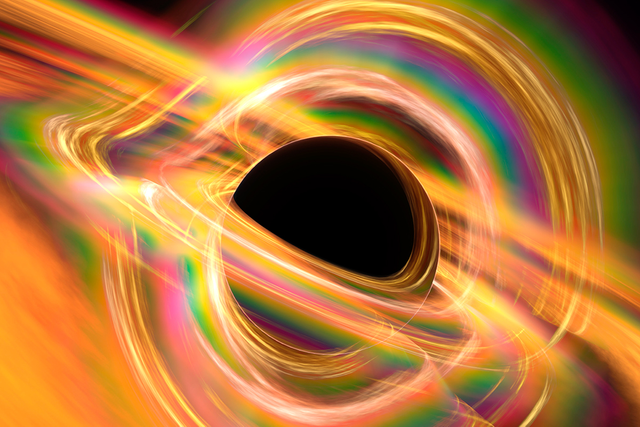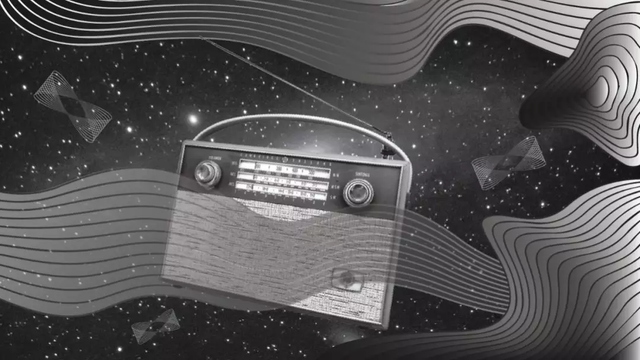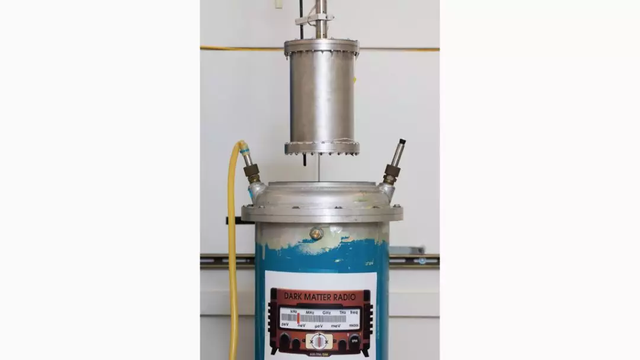Using The Radio to Capture Dark Matter
Dark matter is an invisible matter, which is five times as common as it is in the universal universe. According to the theory, there are billions of dark matter particles passing through the earth every second. They only weakly interact with ordinary matter by gravity, so we can hardly notice them.
Using the peculiar concept of "wave-particle duality" in quantum mechanics, researchers hope to find the waves of dark matter.

Researchers are testing a "radio" prototype that lets them hear melodies from mysterious dark matter particles.__credit
So far, most of the researchers have focused on finding dark matter particles. But with dark matter radios, researchers hope to find waves of dark matter.
Another way
Direct search for dark matter particle exploration experiments require the use of large underground detectors. Researchers want to capture signals that dark matter particles collide with detector particles. However, this signal only appears when dark matter particles are heavy enough to produce enough energy during the collision.
"If the dark matter particles are very light, we are more likely to detect them by waves rather than particles," said Peter Graham, of the Kavli Institute for Particle Astrophysics and Cosmology KIPAC), "Our equipment will allow research to move in the other direction."

Dark matter radios make use of a peculiar concept of quantum mechanics called "wave-particle duality": a single particle can exhibit wave properties.__credit
Taking photons as an example: This is a basic particle that has no mass and can transmit electromagnetic interactions. Photon flux can form what we call light, just like radio waves, which are essentially electromagnetic waves.
Dark matter radios will search for two candidates for dark matter particles. It can look for dark photons - a photon relative of hypothetical existence with a slight mass. Detectors can also be used to find axes, which scientists think can be generated by light and can be converted back to light in a magnetic field.
"Finding dark photons is an entirely new area that has not been explored," said Saptarshi Chaudhuri, a graduate student at the Stanford Experimental Group. "As for the axis, dark matter radios can fill the gaps in the existing experiments."
Intercept dark matter resonance signal
An ordinary radio receives radio waves through an antenna and converts it into sound. By adjusting the circuit, the listener can select a radio station, the current in the circuit can oscillate at a specific frequency. If the oscillation frequency of the circuit is the same as the frequency of the station, resonance occurs and the listener can hear the broadcast.
Dark matter radios work in the same way. At its core is a circuit that regulates the resonant frequency. If the frequency of the device is adjusted to the same frequency as the dark matter particle wave, the circuit will resonate. Scientists can measure the resonance frequency and reveal the mass of dark matter particles.
The idea for this experiment is to do a frequency sweep, slowly adjusting the device to pass different frequencies, just as when adjusting the radio, turning the knob from one end to the other.
Electrical signals from dark matter waves should be very weak. Therefore, Graham sought the help of Kent Irwin, another KIPAC researcher. Irwin's group is developing a highly sensitive magnetometer called superconducting quantum interference devices (SQUIDs) that can be matched to very low-noise amplifiers to look for potential signals.

The dark matter radio was placed in a 2mm thick superconducting niobium protective layer. When placed in the bottom of the blue vacuum flask and cooled by liquid helium, this protective layer blocks interference from outside sources such as radio stations but is easily penetrated by dark matter.__credit
In the final design, dark matter radios will look for particles (masses equivalent to one billionth of a proton) of mass between one and one millionth of an electron volt. The problem is that this range covers the frequency range from kilohertz to gigahertz - that is, the frequency of wireless broadcasts.
"It's a very important and very challenging thing to shield out interfering waves," said Irwin. "In fact, we need copper layers a few meters thick to get the shield in. Fortunately, we can also use thin Superconducting metal layer to achieve the same effect.
One of the benefits of a dark matter radio is that it does not need to shield cosmic rays. Probing studies that look directly for dark matter particles must work deep in the ground to shield particles from the universe, while dark matter radios can work in the college basement.
Researchers are now testing a small prototype at Stanford that will scan a relatively narrow frequency range. Their final plan was to run two separate, full-size instruments at Accelerator Labs in SLAM and Stanford respectively.
"This is an exciting new area," said Arran Phipps, a postdoctoral and project team member at KIPAC. "We could try a new detection method with a relatively low-budget, low-risk device, which is great "
Dark matter radio DJs have taken the first step and are planning further research on dark matter in the coming years. You can also adjust the frequency of the dark matter channel, continue to listen to future experimental results.

References for Text and Images:
- http://midnightinthedesert.com/dark-matter-radio-schedule/
- https://www.newscientist.com/article/2142527-fast-radio-bursts-may-be-dark-matter-stars-hitting-black-holes/
- https://www.symmetrymagazine.org/article/a-radio-for-dark-matter
- https://futurism.com/dark-matter-product-gravitational-waves-twist/
Support @steemstem and the #steemstem
project - curating and supporting quality STEM
related content on Steemit

Hello, you received an upvote from @steemdunk thanks to @amity123! Steem Dunk is an automated curation platform that is easy to use and built for the community. Join us at https://steemdunk.xyz